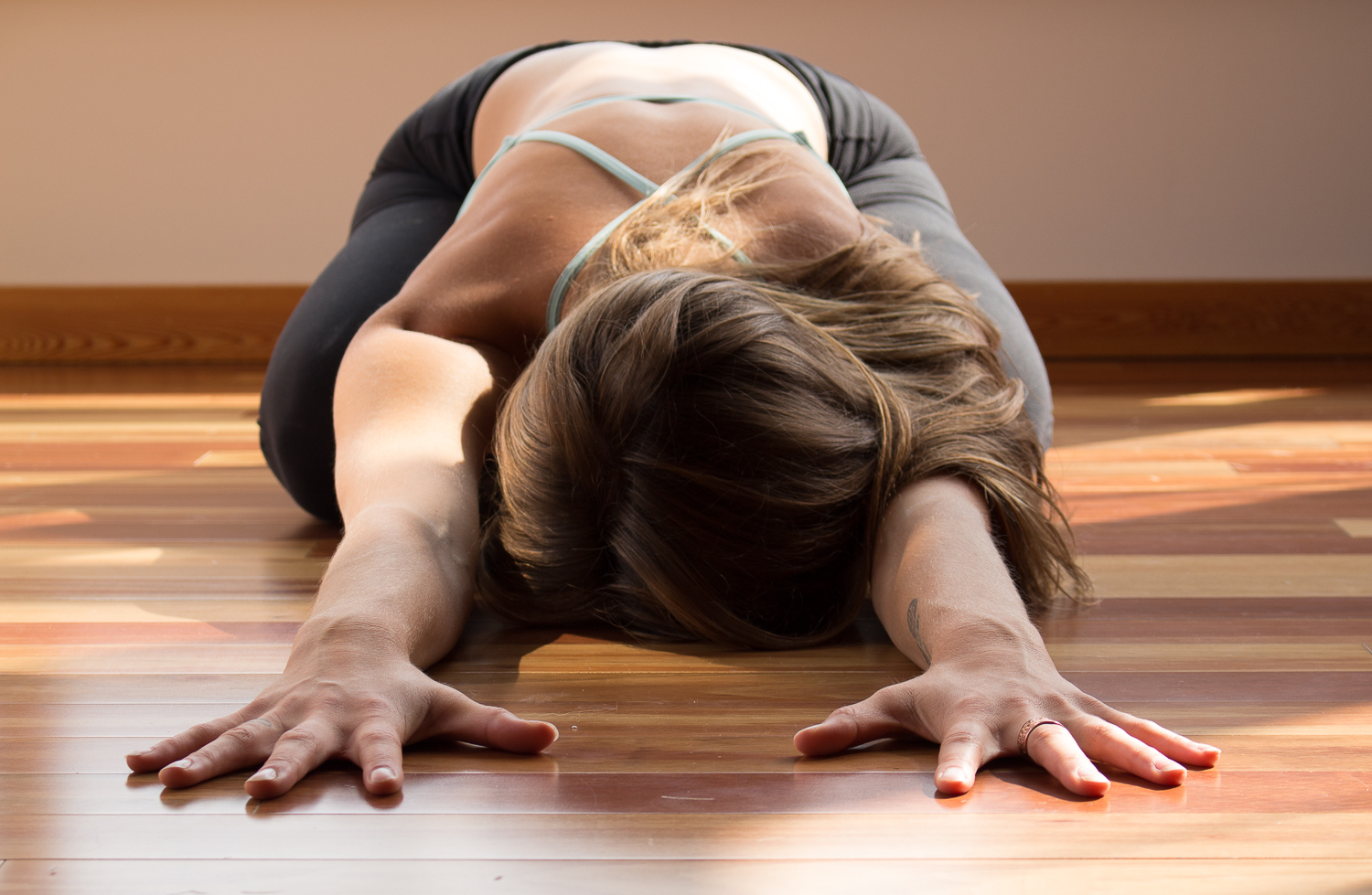Foundation Friday: Balasana
This post is yet another instalment in a series that delves into the basics of yoga—looking at its postures (asana), breath (pranayama), philosophy, and all the other essentials—giving you the foundations upon which to build a solid practice. Today's posture is another great addition to our Grounding Series.
Foundation Friday: Balasana
Pose, or Asana Child's Pose bah-lah-sah-nah
Mmm. Child's Pose.
Don't you just love it when your teacher says those words, offering you the chance to retreat inside, to turn inwards, to shut off all external noise and simply breathe? Child's pose, or Balasana, is frequently offered as a break within sequences, a time to re-establish steady breath, calm the heart rate, or return to intention if we've gravitated away from what we've set out to do.
Why is child's pose so grounding and calming?
- First of all, the shape of the spine in a child's pose mimics the shape of the spine in a fetal position—and our time in utero was, for most of us, the most stress-free, comforting, and grounded environment we've ever known. It's a gentle reminder to our bodies, and then our minds, to return to that calm, quiet state.
- Secondly, all forward folds are—in their physical nature—calming and quieting as our bodies are literally turning in towards themselves. The anatomical action of folding our bellies, chests, and faces into our legs—or in this case, the floor—seals us away from whatever is going on externally so we can only look at ourselves.
- Further, the action of resting the forehead down on something (the earth, stacked fists, a block) gently stimulates the vagus nerve. The vagus nerve helps to regulate the parasympathetic nervous system (the part that allows us to rest and relax), and in doing so it naturally lowers our heart rate, blood pressure, lessens tension and the stress hormone cortisol. That's why child's pose is also an excellent bed-time posture!
Balasana may help…
- Opens through your hips, thighs, and ankles
- Open the shoulders (especially in the traditional variation)
- Calm anxiety, soothe stress, and relieve fatigue
- Help move your nervous system into a more relaxed state
So, how do I get there?
- From Downward Facing Dog, lower your knees down, about mat-distance apart.
- Touch your toes together, and rest your seat back on your heels.
- Fold your torso forward. Let your belly rest in between your thighs.
- Extend your arms forward, palms facing down.
- Find someplace for your forehead to rest—if the ground is not available, you can use a block, a folded blanket, or even stack your palms or your fists.
- Breathe.
We hope this helps you better understand balasana, or child's pose. Please feel free to comment on our Facebook with any further questions. And let us know if you have something you would like to see featured in Foundation Friday!
Categories
- Wellness 241
- Zen Habits & Inspiration 100
- Injury Prevention & Health 30
- Classes 1
- Yogalife Classes 7
- Prop Specific 1
- Studio Information 17
- Foundation Friday 25
- Physical Health 3
- Yoga Specific 54
- Curated Playlists 2
- Karma Program 5
- Staff Adventures & Journeys 10
- Anatomy & Information 30
- Community Event 15
- YEG Highlight 8
- Instructor Stories 22
- Yogi of the Month 13
- What's Going On 35
- Yogalife Workshops, Retreats & Trainings 37
- Recipe 10
- Relaxation 1
- Mental Health 2
- Workshops 34
- Registered Classes 4
- Pregnancy & Family 1
- Member Stories 5





